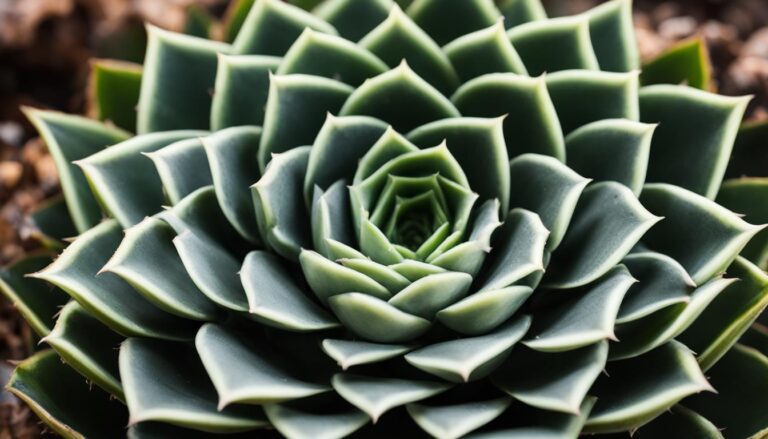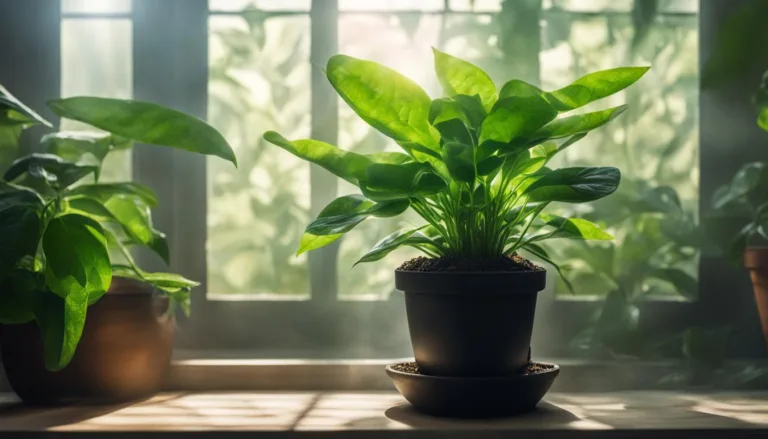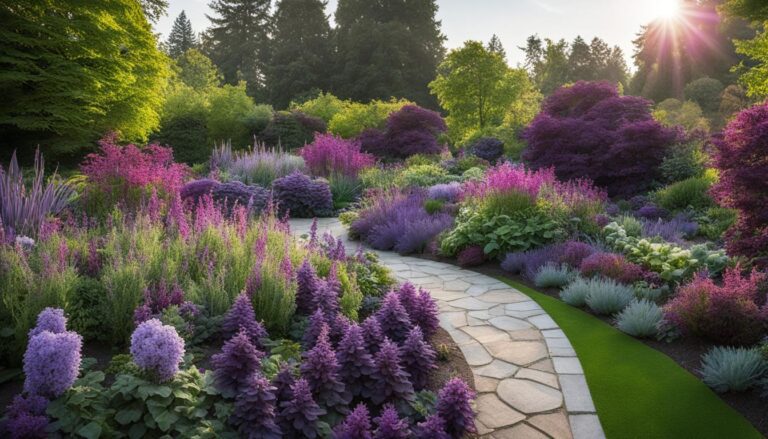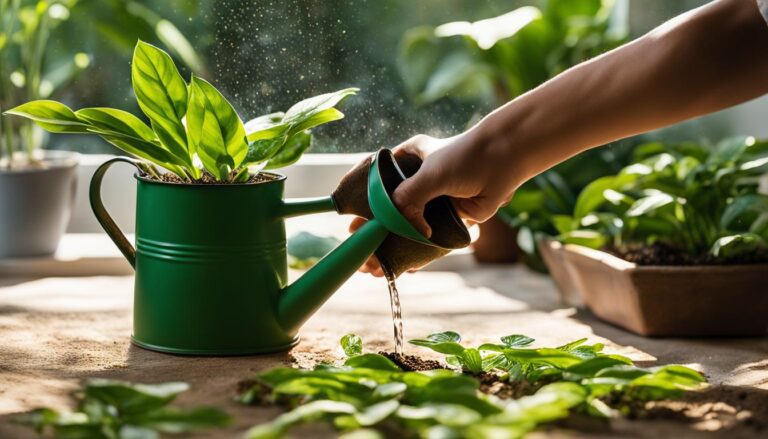
Welcome to my comprehensive guide on Norfolk Island Pine, also known as Araucaria heterophylla. In this article, I will delve into the fascinating world of this unique plant, its care requirements, growth patterns, and light requirements.
Whether you are a seasoned plant enthusiast or a beginner looking to add some greenery to your indoor or outdoor space, this article will provide you with the knowledge you need to unlock the secrets of Norfolk Island Pine.
Norfolk Island Pine, native to Norfolk Island near New Zealand, is cherished for its striking dark needles and distinctive tall and sprawling appearance.
It has a rich history and is often transformed into “living Christmas trees” during the holiday season in South Pacific countries.
When it comes to caring for Norfolk Island Pine, it thrives in bright, indirect light or partial shade and requires generous humidity and moist soil. Regular fertilizing with a balanced 20-20-20 all-purpose feed is recommended to promote healthy growth.
Whether you choose to keep Norfolk Island Pine indoors or plant it in your outdoor space, it is an easy-to-care-for plant that can bring beauty and tranquility to any environment. As you read on, you will discover the various benefits, uses, and planting considerations associated with Norfolk Island Pine. Let’s dive in!
Growing Norfolk Island Pine Indoors
growing a Norfolk Island Pine (Araucaria heterophylla) indoors can be a delightful experience. These trees, with their symmetrical shape and soft, evergreen foliage, can add a touch of forest serenity to any room. Here’s what I’ve learned about keeping them happy and healthy inside my home.
First off, light is a big deal for these guys. They’re like me on a sunny day; they just love it. So, I make sure to place my Norfolk Island Pine near a window where it can get plenty of bright, indirect light. Direct sunlight can be a bit too intense, especially in the summer, so I use sheer curtains to filter the light and prevent sunburn on the delicate needles.
Now, let’s talk about water. I’ve found that these trees like to keep their soil evenly moist, but they’re not fans of wet feet. That means I wait until the top inch of the soil feels dry before I give it a drink. Overwatering is a no-no; it can lead to root rot, and trust me, that’s not a fun problem to deal with.
Humidity is another thing to keep in mind. My home isn’t exactly a tropical paradise, especially in the winter when the heat’s on full blast. To keep my Norfolk Island Pine from drying out, I mist the leaves regularly, and sometimes I even set it on a pebble tray with water to boost the moisture around it.
Feeding is pretty straightforward. During the growing season (spring and summer), I give my pine a balanced, water-soluble fertilizer about once a month. But when fall and winter roll around, I give it a break to let it rest.
Lastly, while these trees are pretty chill about temperatures, they don’t like cold drafts or being too close to heat sources. I keep mine away from open windows in the winter and air conditioning vents in the summer.
Here’s a quick summary of the care tips
| Care Aspect | Details |
|---|---|
| Light | Bright, indirect light; use sheer curtains to protect from direct sun. |
| Water | Allow top inch of soil to dry out before watering; avoid overwatering. |
| Humidity | Mist regularly; consider a pebble tray for extra humidity. |
| Temperature | Keep away from cold drafts and heat sources; prefers 65-75°F (18-24°C). |
| Fertilizer | Feed with a balanced, water-soluble fertilizer monthly in growing season. |
| Soil | Well-draining potting mix. |
| Repotting | Every few years or when roots become crowded; spring is the best time. |
The Benefits and Uses of Norfolk Island Pine
I am thrilled to share with you the numerous benefits and uses of the magnificent Norfolk Island Pine, scientifically known as Araucaria heterophylla.
This versatile plant has gained popularity due to its tall, symmetrical shape and lush foliage, making it a stunning addition to any interior decor. Its adaptability to different light conditions also contributes to its versatility, as it can thrive in both bright, indirect sunlight and partial shade.
One of the key advantages of the Norfolk Island Pine is its evergreen nature, providing year-round visual appeal, even during the depths of winter. Its beautiful dark needles create a sense of tranquility and bring a touch of the outdoors to any space.
Whether used as a standalone statement piece or paired with other plants, this tree adds a natural charm and a calming atmosphere to homes and workplaces.
The Norfolk Island Pine has gained popularity not only for its aesthetic appeal but also for its various uses. Due to its symmetrical shape and dense foliage, it is often transformed into a “living Christmas tree” during the holiday season.
Its ability to withstand indoor conditions and its long lifespan make it a perfect choice for holiday decorations that can last for many years.
| Benefits of Norfolk Island Pine | Uses of Norfolk Island Pine |
|---|---|
|
|
As you can see, the Norfolk Island Pine offers a range of benefits and uses that make it a popular choice among plant enthusiasts. Its adaptability, aesthetic appeal, and multiple applications make it a versatile plant that brings natural beauty and joy into our lives.
Planting Norfolk Island Pine Outdoors: Key Considerations
When considering planting Norfolk Island Pine outdoors, there are several key factors to take into account to ensure the tree’s successful growth and survival. It’s important to evaluate the climate requirements, soil composition, sunlight exposure, and space requirements for this unique plant.
Climate Requirements
Norfolk Island Pine thrives in moderate climates with temperatures ranging from 60°F to 70°F (15°C to 21°C). It is crucial to research the specific climatic conditions of your area to determine if it aligns with the optimal temperature range for this tree. Norfolk Island Pine is most suitable for regions that offer a mild, temperate climate.
Soil Requirements
Well-draining soil is essential for the healthy growth of Norfolk Island Pine. The soil should be slightly acidic to neutral, with a pH level between 5.5 and 7.5. Prior to planting, it is recommended to assess the soil in your outdoor space and make any necessary amendments.
Adding organic matter, such as compost or peat moss, can improve soil drainage and create a favorable environment for the tree’s root system.
Sunlight Requirements
When selecting a location for planting Norfolk Island Pine outdoors, it’s important to consider its sunlight requirements. This tree thrives in bright, indirect sunlight.
Choose a spot that provides a balance between sunlight exposure and shade to ensure the tree receives adequate light without being exposed to direct, intense sunlight for prolonged periods.
Space Requirements
Considering the available space and potential growth size of Norfolk Island Pine is crucial. These trees can reach significant heights and widths, so it’s important to provide enough room for them to flourish without interfering with structures or neighboring plants.
Be mindful of their growth potential and ensure adequate spacing to allow for their natural growth and development.
| Climate Requirements | Soil Requirements | Sunlight Requirements | Space Requirements |
|---|---|---|---|
| Moderate climates with temperatures ranging from 60°F to 70°F (15°C to 21°C) | Well-draining soil that is slightly acidic to neutral (pH level between 5.5 and 7.5) | Bright, indirect sunlight with a balance between sunlight exposure and shade | Adequate spacing to accommodate the tree’s potential height and width |
Care and Maintenance Tips for Outdoor Norfolk Island Pine
When it comes to caring for your outdoor Norfolk Island Pine, a few key tips can keep your tree healthy and thriving. By following these guidelines, you can ensure that your tree flourishes in its outdoor environment.
First and foremost, it’s important to plant your Norfolk Island Pine during the optimal season. Spring and fall are the best times for planting, as extreme temperatures can be detrimental to its growth.
Make sure to clear the planting area of any weeds or debris and amend the soil with organic matter for proper drainage.
Proper watering is essential for maintaining the health of your outdoor Norfolk Island Pine. Provide regular, deep watering to keep the soil consistently moist without overwatering or underwatering.
Applying a layer of organic mulch around the base of the tree can help conserve moisture, regulate soil temperature, and prevent weed growth.
When it comes to pruning, it’s best to limit it to removing dead or damaged branches during the dormant season. This helps promote healthy growth and maintain the overall shape and structure of the tree.
It’s important to monitor your tree for pests and diseases. If necessary, use appropriate measures such as insecticidal soap or oil to control pests and maintain the health of your Norfolk Island Pine.
FAQ
What is Norfolk Island Pine?
Norfolk Island Pine, also known as Araucaria heterophylla, is a fascinating plant with a rich history and many uses. It originates from Norfolk Island near New Zealand and is loved for its beautiful dark needles and tall, sprawling appearance.
How do I care for Norfolk Island Pine indoors?
Norfolk Island Pines thrive in bright, indirect light or partial shade and require generous humidity and moist soil. Fertilizing with a balanced 20-20-20 all-purpose feed once a month from autumn through early spring is recommended. They are extremely easy to care for and can live for many years after the holidays are over.
Can Norfolk Island Pine be planted outdoors?
Yes, Norfolk Island Pine can be planted outdoors, but certain key considerations need to be kept in mind. These trees prefer moderate climates and thrive in regions with temperatures ranging from 60°F to 70°F. They require well-draining soil that is slightly acidic to neutral, with a pH level between 5.5 and 7.5. Proper care and maintenance are important for their health and vitality.
What are the benefits and uses of Norfolk Island Pine?
Norfolk Island Pine has various benefits and uses that make it a popular and versatile plant. Its tall, symmetrical shape and lush foliage make it a great addition to interior decor, providing natural beauty and tranquility. The adaptability of Norfolk Island Pines to different light conditions makes them suitable for various indoor environments. They are also used as “living Christmas trees” during the holiday season in South Pacific countries.
How do I plant Norfolk Island Pine outdoors?
Plant Norfolk Island Pines during spring or fall for optimal growth, avoiding extreme temperatures. Clear the planting area of weeds and debris, and ensure well-draining soil amended with organic matter. Dig a hole slightly larger than the root ball when planting and backfill with amended soil, watering thoroughly. Provide regular, deep watering to maintain soil moisture without overwatering or underwatering. Apply organic mulch around the base of the tree to conserve moisture, regulate soil temperature, and suppress weeds.
How should I care for Norfolk Island Pine outdoors?
Proper care and maintenance are important for the health and vitality of outdoor Norfolk Island Pines. Limit pruning to removing dead or damaged branches during the dormant season. Monitor for pests and diseases and take appropriate measures, such as using insecticidal soap or oil, when necessary.







One Comment
Comments are closed.